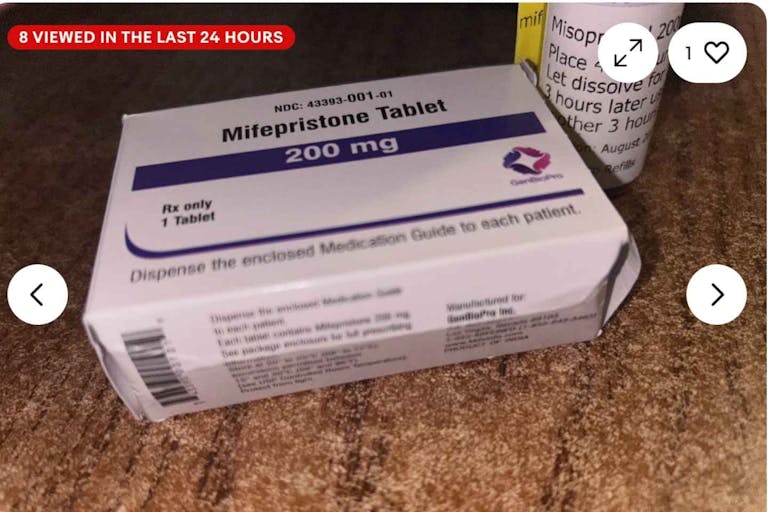
This eBay store is selling the abortion pill, putting women in danger
Carole Novielli
·
The NYT officially thinks Texas’ abortion safety law is “quackery”
In a piece entitled “Quackery and Abortion Rights,” the New York Times explained its opinion that Texas’ new abortion safety law is deceptive and poorly supported by facts. The piece, credited to “The Editorial Board” (which is made up of eighteen members), takes issue with components of HB2, Texas’ most expansive pro-life law, a paradigm to other states which are gleaning unique legislation from it en masse.
Currently at issue in Texas courts is the ambulatory surgical center (ASC) requirement of HB2. Unsurprisingly, this provision hurts the business of abortion mills who chose to construct their facilities in a sub-par manner. Also unsurprising is the fact that the latest legal attack on HB2 against the state (aka Whole Women’s Health v. Lakey) comes from an abortion business that has been financially crippled by the provision.
The New York Times, which calls abortion a “fundamental right,” laments:
The admitting-privileges rule, which is already in place, has severely limited access to safe and legal care in Texas. Absent court intervention, the situation will get much worse. There are now only 19 abortion clinics in Texas, compared with 41 before the new law. This number could shrink to as few as seven after Sept. 1, when the surgical-center rule takes effect.
As much as it may temporarily hurt the money-making abilities of the abortion industry in Texas, the ASC provision exists because non-ASC abortion mills are unable to accommodate the full spectrum of needs that arise when an abortion goes awry and a woman needs care from an outside team. And botched abortion is too common a circumstance to ignore. Abortion advocates decry the distance that some women will have to travel in the absence of non-ASC abortion mills, but the provision fundamentally exists to ensure that the safety of women is protected above all else.
Article continues below
Dear Reader,
In 2026, Live Action is heading straight where the battle is fiercest: college campuses.
We have a bold initiative to establish 100 Live Action campus chapters within the next year, and your partnership will make it a success!
Your support today will help train and equip young leaders, bring Live Action’s educational content into academic environments, host on-campus events and debates, and empower students to challenge the pro-abortion status quo with truth and compassion.
Invest in pro-life grassroots outreach and cultural formation with your DOUBLED year-end gift!
A classic example of the need for abortion mills to be ambulatory surgical centers exists in Karnamaya Mongar‘s story. Mongar sought an abortion from Kermit Gosnell at his “house of horrors,” where his staff overdosed her on anesthesia. When a paramedic team arrived, they lost critical minutes trying to navigate Mongar’s stretcher out of the center, which was not equipped with wide enough hallways for the task (something ASC requirements prevent). In the interim, Mongar died.
This problem is not relegated to ultra-incompetent abortion mills like Gosnell’s. Very few abortion mills are constructed from the beginning as ASCs, and converting existing mills into ASCs is sometimes not possible because of the extent of changes that are required. Rather than placing responsibility for women’s safety on abortion mills, and asking them why they did not construct safe facilities in the first place, abortion advocates — including the entire editorial board team at the New York Times — accuse pro-lifers of “restricting” women’s access to so-called “safe” abortions by designing laws like HB2.
In reality, laws like HB2 address safety issues to women’s health that should never need to be corrected in the first place. Any organization presenting itself as a women’s health center should have actual women’s health in mind when constructing its facility. HB2, with its ASC requirement, simply enforces safety where the abortion industry failed to self-police in the first place.
Closing remarks in the lawsuit against the state were made last week, but Judge Lee Yeakel has not yet released his decision. Yeakel has a sordid past on abortion-related rulings, so it is unclear what the outcome will be. A decision is expected before September 1, when the ASC provision goes into effect.
Live Action News is pro-life news and commentary from a pro-life perspective.
Contact editor@liveaction.org for questions, corrections, or if you are seeking permission to reprint any Live Action News content.
Guest Articles: To submit a guest article to Live Action News, email editor@liveaction.org with an attached Word document of 800-1000 words. Please also attach any photos relevant to your submission if applicable. If your submission is accepted for publication, you will be notified within three weeks. Guest articles are not compensated (see our Open License Agreement). Thank you for your interest in Live Action News!

Carole Novielli
·
Analysis
Cassy Cooke
·
Analysis
Cassy Cooke
·
Analysis
Nancy Flanders
·
International
Angeline Tan
·
Pop Culture
Cassy Cooke
·
Human Interest
Lauren Enriquez
·
Activism
Lauren Enriquez
·
Activism
Lauren Enriquez
·
Activism
Lauren Enriquez
·
Lauren Enriquez
·